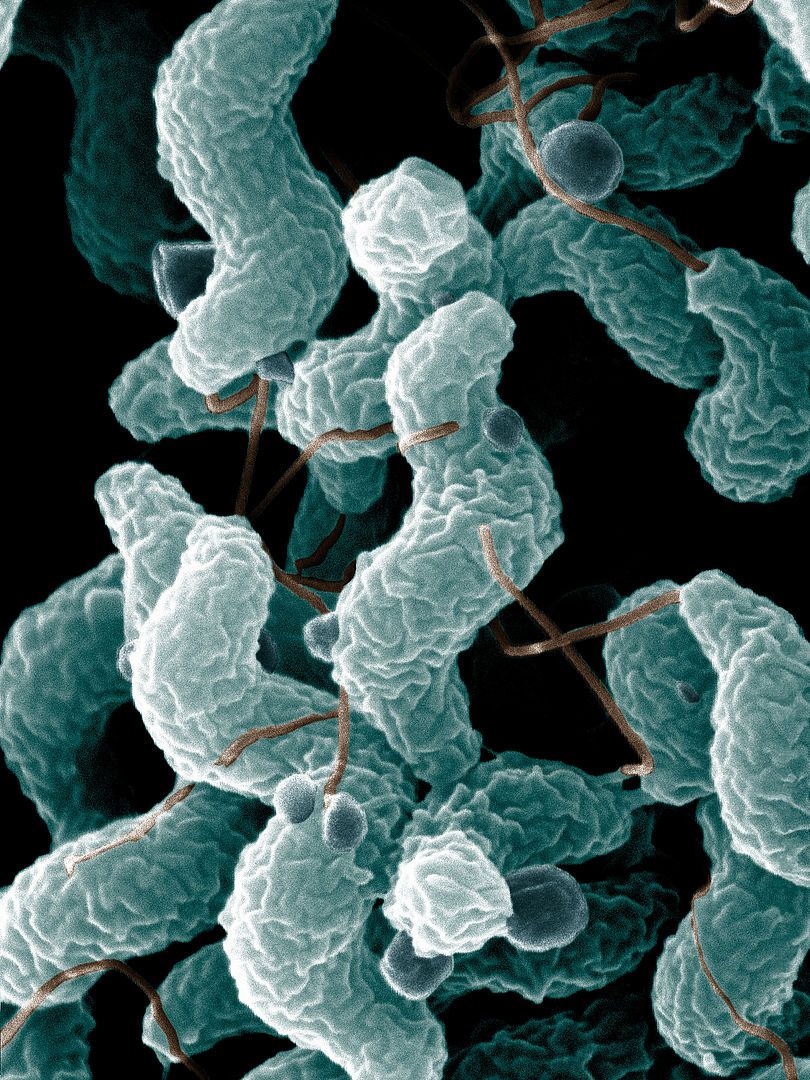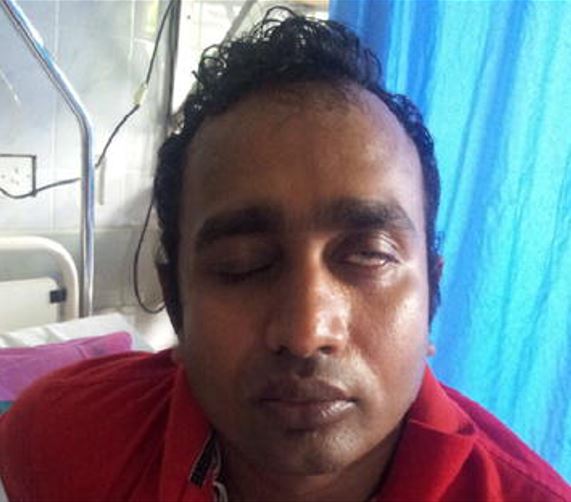Guillain-Barré syndrome (GBS), once thought to be a single disease process, is a family of immune-mediated polyneuropathies that occur after infections (e.g., with Campylobacter jejuni). Typical GBS is characterized by acute monophasic neuromuscular paralysis, which is symmetric and ascending in progression. If the paralysis reaches the respiratory muscles, GBS can progress into respiratory failure, which requires prolonged hospitalization. Management is mostly supportive and may require either plasma exchange or IV immunoglobulin.
Last updated: Mar 4, 2024

Campylobacter jejuni
This scanning electron micrograph depicts the S-shaped organism with a single, polar flagella.
Clinical symptoms vary based on the subtype of GBS GBS An acute inflammatory autoimmune neuritis caused by t cell- mediated cellular immune response directed towards peripheral myelin. Demyelination occurs in peripheral nerves and nerve roots. The process is often preceded by a viral or bacterial infection, surgery, immunization, lymphoma, or exposure to toxins. Common clinical manifestations include progressive weakness, loss of sensation, and loss of deep tendon reflexes. Weakness of respiratory muscles and autonomic dysfunction may occur. Polyneuropathy. Individuals may have a history of respiratory or GI symptoms 1–4 weeks prior to the appearance of GBS GBS An acute inflammatory autoimmune neuritis caused by t cell- mediated cellular immune response directed towards peripheral myelin. Demyelination occurs in peripheral nerves and nerve roots. The process is often preceded by a viral or bacterial infection, surgery, immunization, lymphoma, or exposure to toxins. Common clinical manifestations include progressive weakness, loss of sensation, and loss of deep tendon reflexes. Weakness of respiratory muscles and autonomic dysfunction may occur. Polyneuropathy.

Clinical symptoms of Guillain-Barré syndrome:
Bell palsy (facial nerve palsy) in an individual with GBS following an acute dengue fever infection
Suspected GBS GBS An acute inflammatory autoimmune neuritis caused by t cell- mediated cellular immune response directed towards peripheral myelin. Demyelination occurs in peripheral nerves and nerve roots. The process is often preceded by a viral or bacterial infection, surgery, immunization, lymphoma, or exposure to toxins. Common clinical manifestations include progressive weakness, loss of sensation, and loss of deep tendon reflexes. Weakness of respiratory muscles and autonomic dysfunction may occur. Polyneuropathy based on clinical presentation and medical history. Two-thirds of individuals have a history of influenza-like, respiratory, or gastrointestinal illness in the 6 weeks prior to onset of symptoms.[2,5]
The following criteria were adapted from the National Institute of Neurological Disorders and Stroke (NINDS):
The following studies may potentially be ordered to help exclude other possible causes of acute flaccid paralysis Acute flaccid paralysis West Nile Virus, depending on the patient’s clinical picture (list is not comprehensive):
Individual management may vary based on location. The following guidance is based on US, UK, and European guidelines.
| Score | Functional status |
|---|---|
| 0 | Healthy |
| 1 | |
| 2 | |
| 3 | Able to walk ≥ 10 m assisted |
| 4 | Chairbound/bedridden |
| 5 | Requires assisted ventilation Ventilation The total volume of gas inspired or expired per unit of time, usually measured in liters per minute. Ventilation: Mechanics of Breathing |
| 6 | Dead |
Clinicians should assess for:[2]
Erasmus GBS GBS An acute inflammatory autoimmune neuritis caused by t cell- mediated cellular immune response directed towards peripheral myelin. Demyelination occurs in peripheral nerves and nerve roots. The process is often preceded by a viral or bacterial infection, surgery, immunization, lymphoma, or exposure to toxins. Common clinical manifestations include progressive weakness, loss of sensation, and loss of deep tendon reflexes. Weakness of respiratory muscles and autonomic dysfunction may occur. Polyneuropathy Respiratory Insufficiency Score (EGRIS):[7]